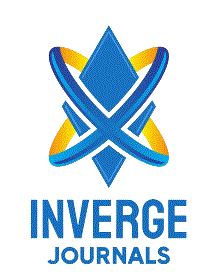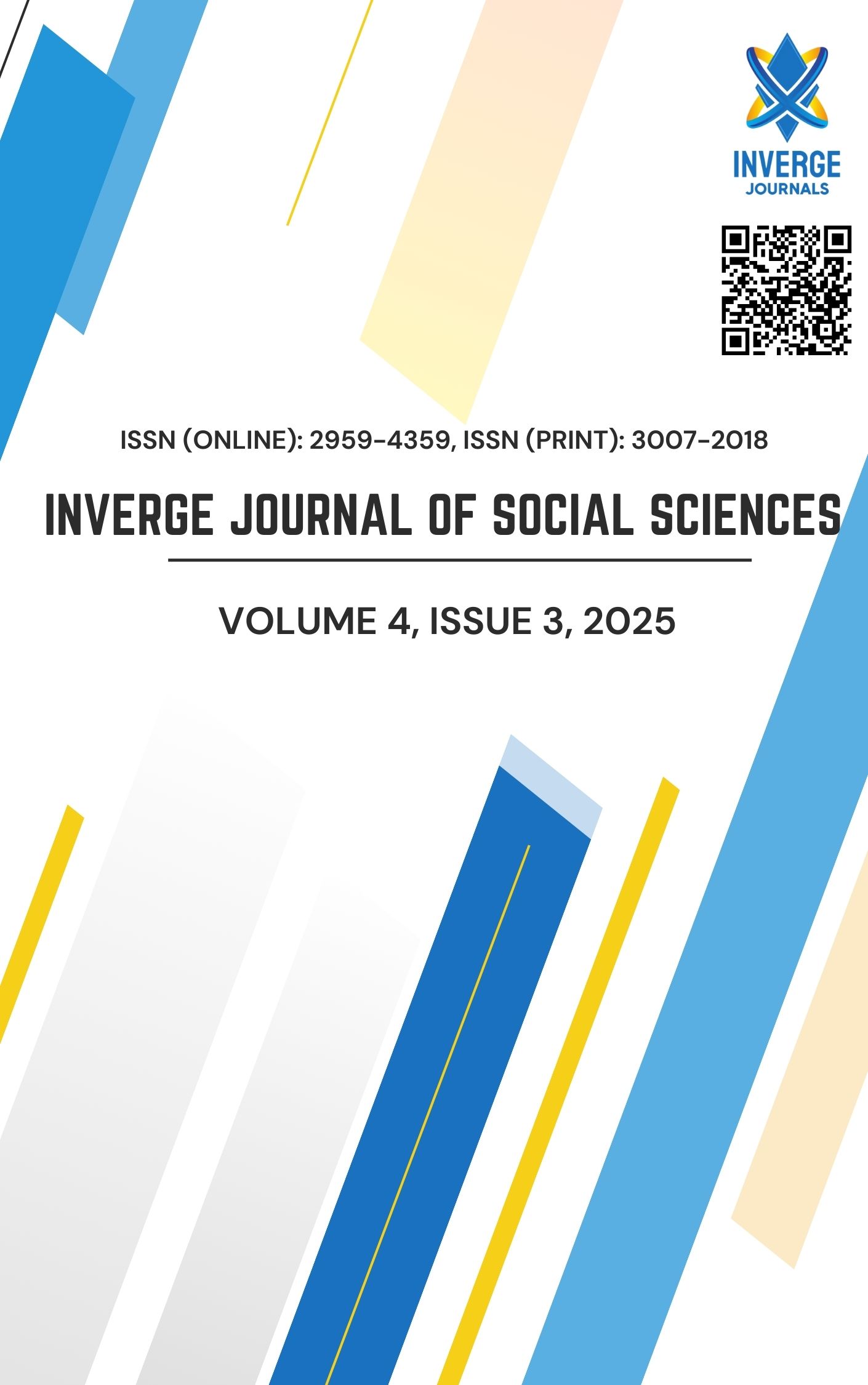Labour Market Inequities and Informal Migration: Economic Pressures and the Growth of Human Smuggling
DOI:
https://doi.org/10.63544/ijss.v4i3.152Keywords:
Human Smuggling, Labour Market Inequities, Economic Pressures, Exploitation, Migration Policy, Unemployment, Low Wages, Smuggling Networks, Migrant ProtectionAbstract
This paper explores the connection between labour market inequities, informal migration, and the rise of human smuggling networks, focusing on economic push factors driving irregular migration. Survey data from 500 migrants reveals unemployment (rated 4.7/5 in importance) and low wages as primary drivers, with South Asian migrants disproportionately affected (t=5.2, p<0.001). The study finds a strong correlation (r=0.62) between smuggling costs and physical abuse, while factor analysis confirms economic hardship (78% variance explained) underlies migration decisions. Structural equation modelling demonstrates how labour inequities lead to smuggling (β=0.72) and subsequent exploitation (β=0.58). Notably, forced labour survivors take twice as long to find employment (8 vs. 4 months, χ²=15.3). Despite known risks, 30% used smugglers due to lack of alternatives, paying exorbitant fees (transportation=$1200, bribes=$1000) that increased vulnerability.
The findings highlight three critical policy needs: (1) targeted economic interventions in high-migration regions to address unemployment and wage disparities, (2) expansion of legal migration channels with streamlined procedures, and (3) international cooperation to dismantle smuggling networks while protecting migrants' rights. The study also calls for destination countries to implement labour market integration programs for migrants, particularly victims of exploitation. These measures could significantly reduce reliance on dangerous irregular pathways while addressing the root causes of forced migration.
References
Amin, A. (2006). Migration, labor markets, and globalization. Journal of International Migration and Integration, 7(3), 367–388. https://doi.org/10.1007/s12134-006-1013-1
Andreas, P. (2000). Border games: Policing the U.S.-Mexico divide. Cornell University Press.
Asif, M., Pasha, M. A., Mumtaz, A., & Sabir, B. (2023). Causes of Youth Unemployment in Pakistan. Inverge Journal of Social Sciences, 2(1), 41–50. https://doi.org/10.63544/ijss.v2i1.21
Basu, K. (2013). The economics of human trafficking. MIT Press.
Bello, W., & Meyer, W. (2008). The global economic crisis and migration. Journal of Migration Studies, 16(1), 51–71. https://doi.org/10.1177/146879680801600103
Berg, L. (2017). The human smuggling business: A global industry. Oxford University Press.
Betts, A., & Collier, P. (2017). Refuge: Transforming a broken refugee system. Penguin Press.
Boswell, C. (2003). The political economy of migration in Europe. European Journal of Migration and Law, 5(2), 17–34. https://doi.org/10.1163/157181603322657274
Cassarino, J. P. (2004). The external dimension of European immigration policy. Mediterranean Politics, 9(1), 25–45. https://doi.org/10.1080/13629390410001680029
Castles, S. (2000). Ethnicity and global politics. Open University Press.
Castles, S. (2007). The age of migration: International population movements in the modern world. Palgrave Macmillan.
Crawley, H., & Skleparis, D. (2018). Migrants and human smugglers: The political economy of migration routes. Migration Studies, 6(2), 210–227. https://doi.org/10.1093/migration/mnx065
De Haas, H. (2010). Migration and development: A theoretical perspective. International Migration Review, 44(1), 227–264. https://doi.org/10.1111/j.1747-7379.2009.00804.x
Düvell, F., et al. (2014). Migration policies, human smuggling, and trafficking in the European Union. European Migration Studies, 9(3), 47–69. https://doi.org/10.1177/1468796814532398
Ghosh, B. (2000). Managing migration: The role of economic policies. Oxford University Press.
Hernandez, L. L., & Yamada, A. (2018). Human smuggling: Economic, social, and legal dimensions. Migration and Human Rights Review, 12(3), 102–118. https://doi.org/10.1177/2331502418786712
Hollifield, J. F. (2004). The politics of international migration. International Migration Review, 38(4), 915–929. https://doi.org/10.1111/j.1747-7379.2004.tb00225.x
International Labour Organization (ILO). (2017). Global estimates on migrant workers and the labour market. https://www.ilo.org/global/topics/labour-migration/lang--en/index.htm
International Organization for Migration (IOM). (2017). World Migration Report 2018. https://publications.iom.int/books/world-migration-report-2018
Koser, K. (2008). Why migration matters. Springer.
Koser, K. (2010). Dimensions and dynamics of migration in the globalizing world. Routledge.
Laczko, F., & Aghazarm, C. (2009). Migration, development, and human trafficking. International Organization for Migration.
Liu, X., et al. (2019). The impact of digital technology on human trafficking and migration. Journal of Technology in Society, 11(1), 87–95. https://doi.org/10.1016/j.techsoc.2019.01.004
Martin, J. (2012). Refugee policy and human smuggling: A comparative analysis. Springer.
Martin, P. (2009). Labor migration in Asia: A review of trends and issues. Asian Development Bank.
Massey, D. S., et al. (1993). Theories of international migration: A review and appraisal. Population and Development Review, 19(3), 431–466. https://doi.org/10.2307/2938462
O'Neill, K. (2015). The economics of human smuggling: Pathways to labor exploitation. Labor Economics Journal, 34(2), 118–137. https://doi.org/10.1016/j.labeco.2015.03.002
Pellegrino, A. (2001). Migration and development in Latin America and the Caribbean. UN Economic Commission for Latin America and the Caribbean.
Pellegrino, A. (2001). The challenge of migration in Latin America. United Nations Population Division.
Rafiq-uz-Zaman, M. (2025). Bridging the skills divide: A comparative study of skill-based education across SAARC countries with a policy roadmap for Pakistan. Social Science Review Archives, 3(3), 787–795. https://doi.org/10.70670/sra.v3i3.913
Rafiq-uz-Zaman, M. (2025). STEAM: A contemporary concept and a set of early childhood education. Journal of Childhood Literacy and Societal Issues, 4(1), 122–140. https://doi.org/10.71085/joclsi.04.01.77
Rafiq-uz-Zaman, M., & Asif Nadeem, D. M. (2025). Unveiling critical success factors for skill-based education programs: A student-centred analysis in Pakistani schools. Inverge Journal of Social Sciences, 4(3), 11–19. https://doi.org/10.63544/ijss.v4i3.139
Rafiq-uz-Zaman, M., & Nadeem, M. A. (2024). Comparative analysis of skill-based education curriculum in Pakistan and India: A contemporary review. International Journal of Academic Research for Humanities, 4(3), 188–197. https://doi.org/10.5281/zenodo.13646448
Rafiq-uz-Zaman, M., Ashraf, I., Shah, H., & Farah, N. (2025). Educational environment and teacher performance in the context of special education institutions in Pakistan: A review paper. Social Science Review Archives, 3(2), 17–35. https://doi.org/10.70670/sra.v3i2.552
Rafiq-uz-Zaman, M., Bano, S., & Naveed, Y. (2025). Comparative analysis of authoritative and democratic leadership styles and their impact on school management effectiveness. Inverge Journal of Social Sciences, 4(2), 105–117. https://doi.org/10.63544/ijss.v4i2.132
Rafiq-uz-Zaman, M., Bukhari, S. T., Malik, N., Rehman, L., & Qamar, A. H. (2025). Gender differences in the use and challenges of breakthrough technology in higher education: Evidence from Punjab. The Critical Review of Social Sciences Studies, 3(3), 1056–1073. https://doi.org/10.59075/hpdvq714
Reitano, T., et al. (2017). The evolution of human smuggling: A transnational analysis. Global Initiative Against Transnational Organized Crime.
Ruhs, M. (2013). The price of rights: Regulating international labor migration. Princeton University Press.
Shelley, L. (2007). Human trafficking: A global perspective. Cambridge University Press.
United Nations Office on Drugs and Crime (UNODC). (2020). The global report on trafficking in persons. https://www.unodc.org/unodc/en/human-trafficking/global-report-on-trafficking-in-persons.html
Van der Woude, M. (2017). Smuggling networks and the rise of human trafficking. Global Migration Review, 5(2), 89–104. https://doi.org/10.1177/2331502417745678
World Bank. (2017). Global economic prospects: Sub-Saharan Africa. https://www.worldbank.org/en/publication/global-economic-prospects
Zolberg, A. R. (2006). A nation by design: Immigration policy in the fashioning of America. Harvard University Press.
Downloads
Published
How to Cite
Issue
Section
Categories
License
Copyright (c) 2025 Irfan Ullah, Saad Khalid, Dr. Muhammad Zakir, Ahmed, Muhammad Kashif

This work is licensed under a Creative Commons Attribution-NonCommercial-ShareAlike 4.0 International License.
The work is concurrently licensed under a Creative Commons Attribution-NonCommercial-ShareAlike 4.0 International License, which permits others to share the work with an acknowledgement of the authorship and the work's original publication in this journal, while the authors retain copyright and grant the journal the right of first publication.









